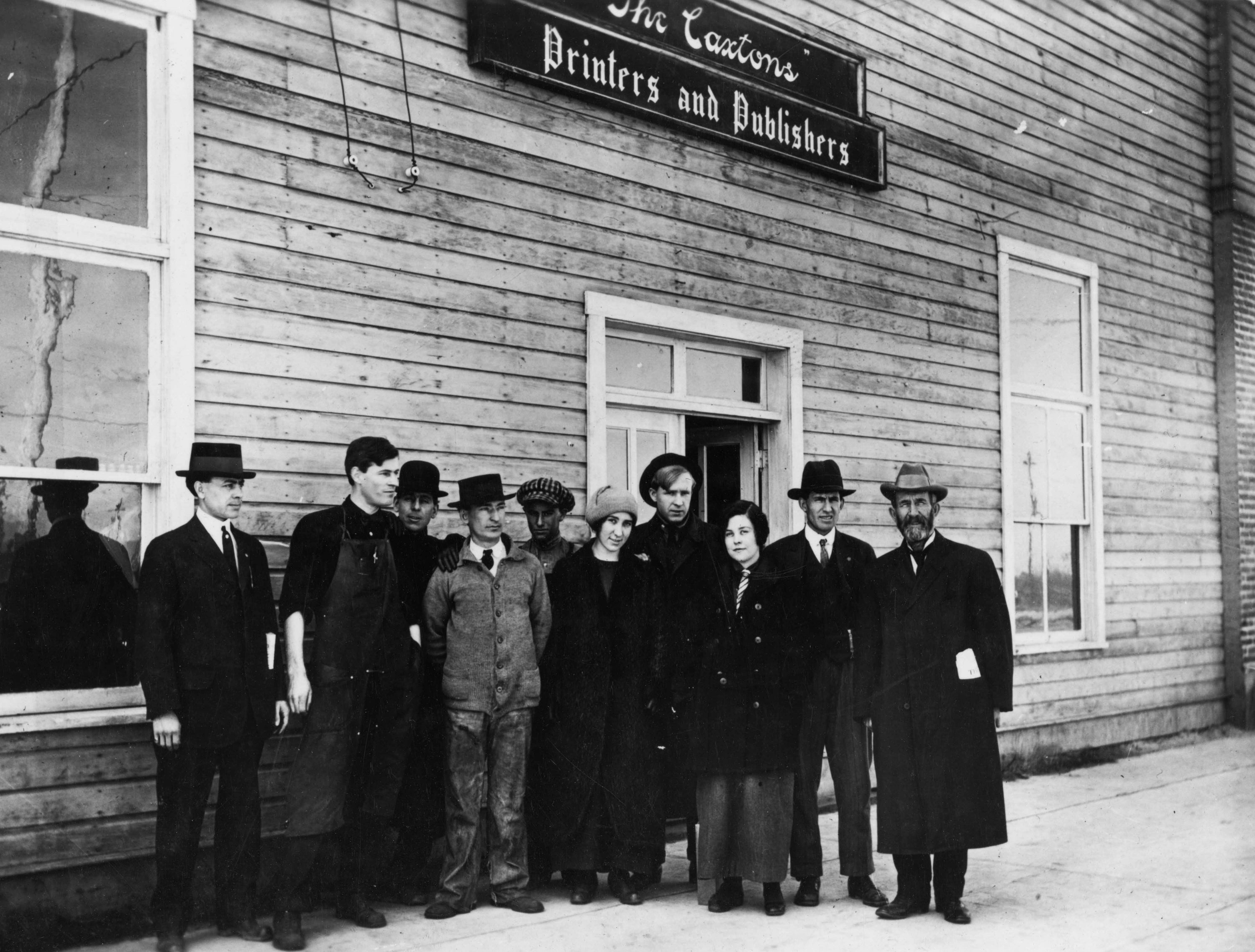
Lovers of local books and publishing have a treat in store – a duo of new exhibitions at Albertsons Library featuring items from Boise State’s Special Collections and Archives. The first features Caxton Printers, the century-old, family-owned publisher that still operates out of its original office in Caldwell. The second features writer Ruth Gipson Plowhead, who wrote children’s stories for more than three decades about life in the West.
“The exhibits are related not only because Caxton Printers published all of Plowhead’s books, but also because she is the sister of James Gipson, the founder of Caxton Printers,” said Alessandro Meregaglia, an assistant professor and archivist/librarian, and curator of the exhibitions.
The exhibitions are part of a larger research project Meregaglia is undertaking on the history of Caxton with support from three grants: a research fellowship from the Idaho Humanities Council, a travel grant from the Bibliographical Society of America and a grant from Boise State’s former Arts and Humanities Institute.
Caxton, named for William Caxton, the fifteenth-century printer believed to be the first in England, is notable, said Meregaglia. At a time when much of the country regarded the West as a wild frontier, the publisher championed western writers who were often overlooked by established publishing houses on the East Coast. Caxton “never focused on the bottom line,” but nonetheless became one of the most important regional publishers in the U.S., producing books in numerous genres.
In addition to his literary work, founder James H. Gipson was active in politics. His beliefs tended toward libertarianism. He published the first hard cover American edition of “Anthem,” a novella by Ayn Rand. Gipson was friends with Theodore Roosevelt and campaigned for Roosevelt during his presidential runs. Gipson directed the company from its founding in 1907 until his death in 1965. He published some 800 titles, approving each one personally.
The current exhibition on campus includes some of Caxton’s earliest published books, including “Irish Mag,” a 1916 suede-bound book of poems by Earl Wayland Bowman, and “Syringa Blossoms,” stories of famous Idahoans written in 1912 by J.D. Flenner. Also included are the original printing plates Caxton used to print works by Vardis Fisher, one of Idaho’s most famous novelists, probably best known for “Mountain Man,” which became the film “Jeremiah Johnson,” (1972), starring Robert Redford.
The four-case exhibit devoted to Ruth Gipson Plowhead includes several of her books and the original artwork that illustrated them.
Plowhead was born in 1877 in Greeley, Colorado. She moved with her family to Caldwell when she was 15 and lived there for the rest of her life. She began writing stories at a young age but published her first book when she was 53. That book, “Lucretia Ann on the Oregon Trail” (1931), garnered attention and favorable reviews. It is still in print. Plowhead wrote eight books and many articles. She died in 1968 at the age of 90.
More details:
The Caxton exhibition is on the second floor of the library in Special Collections and Archives. It will be up through the end of the semester. The Plowhead exhibition, which closes on March 21, is on the first floor, near circulation.
Meregaglia will give an exhibitions-related talk at 2 p.m. on Tuesday, March 12, in the library’s Frank Church Room (second floor). He will give an overview of Caxton printers and explain their importance in the context of book publishing in the West.
You can read Meregaglia’s article “James H. Gipson and the Effort to Free Ezra Pound,” recently published by the Idaho Center for the Book here: https://works.bepress.com/alessandro-meregaglia/9/